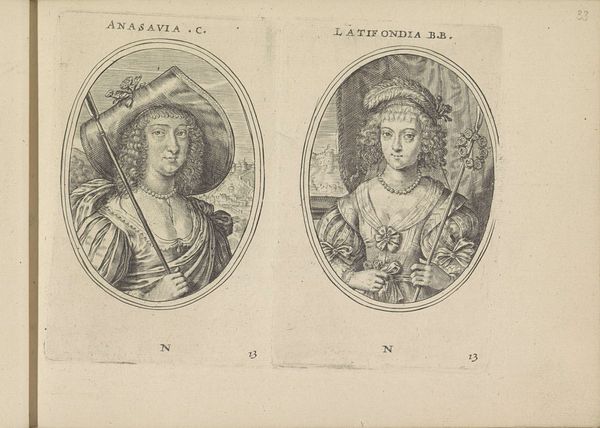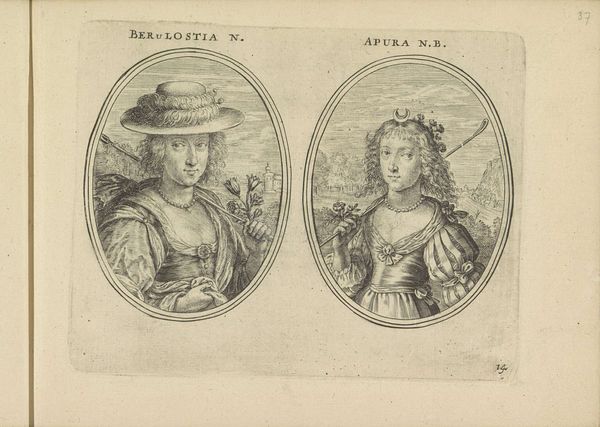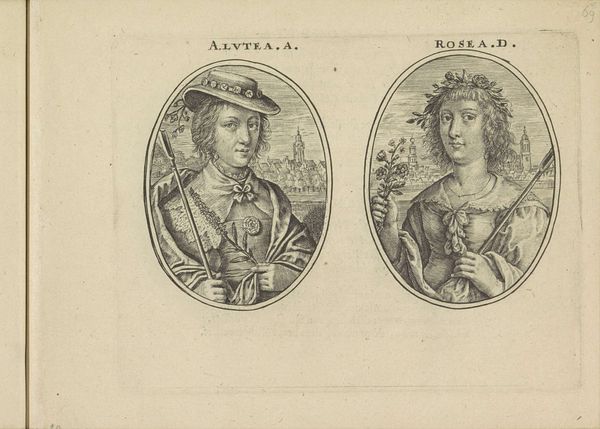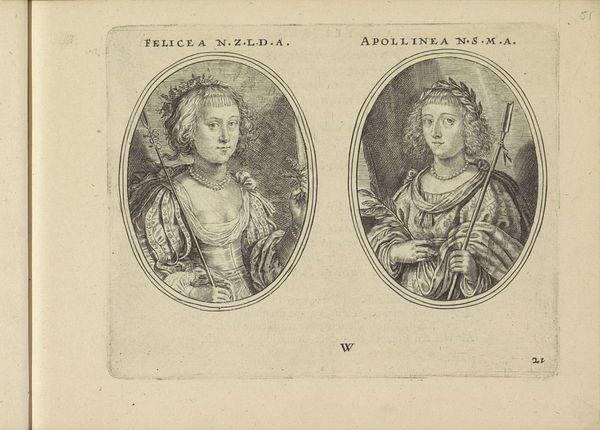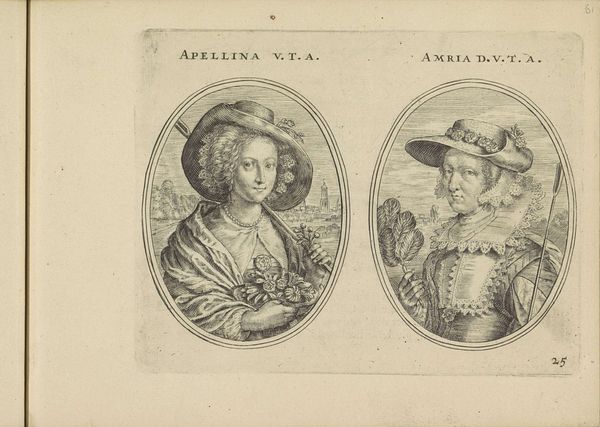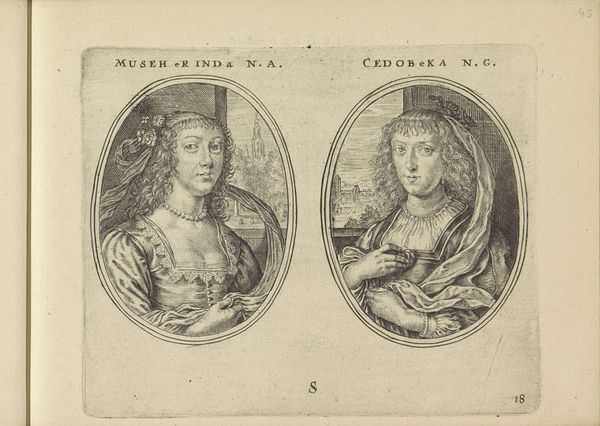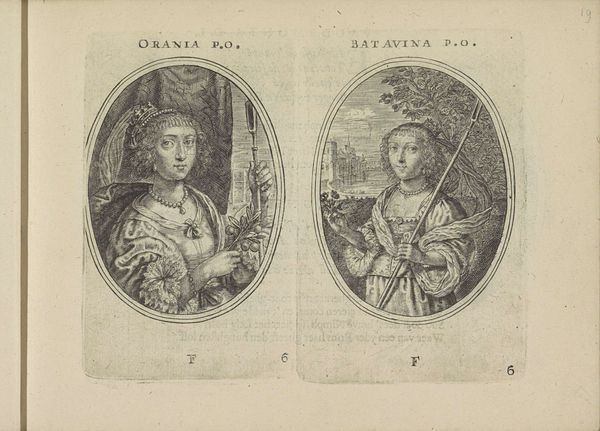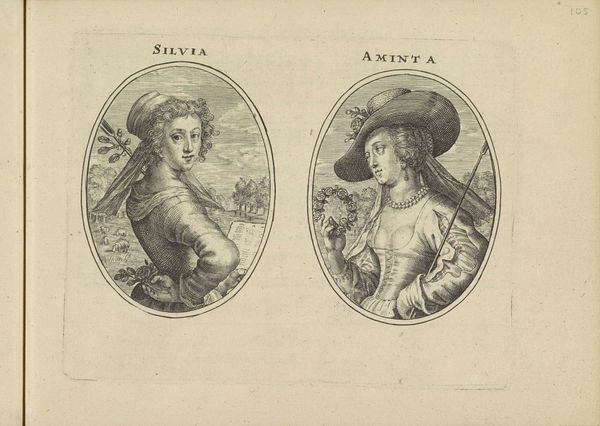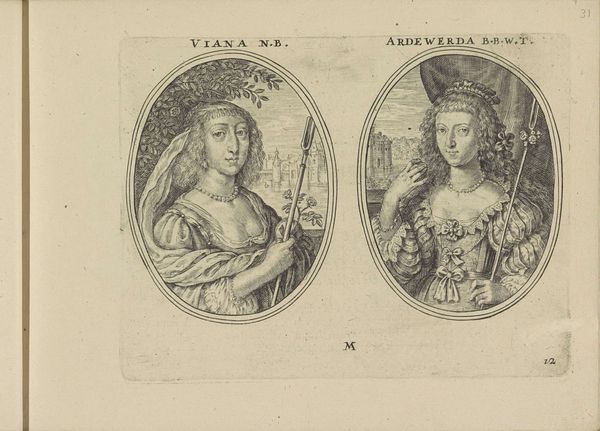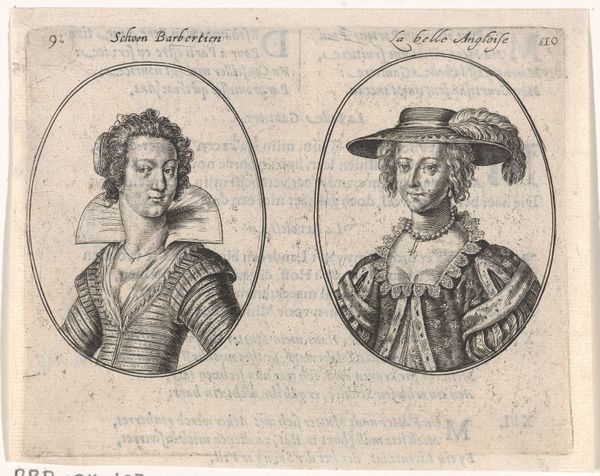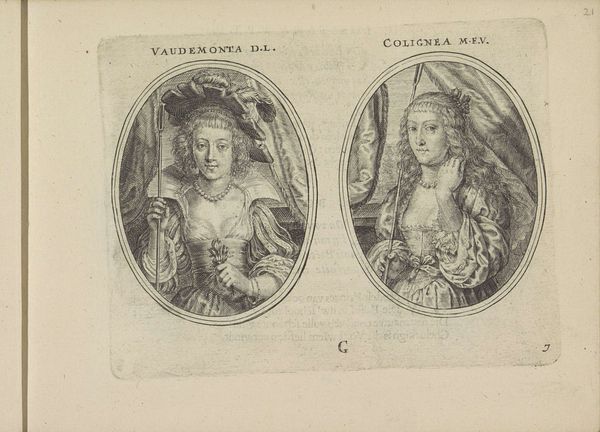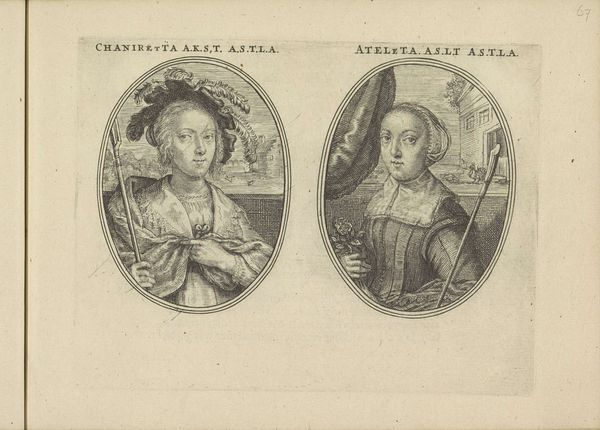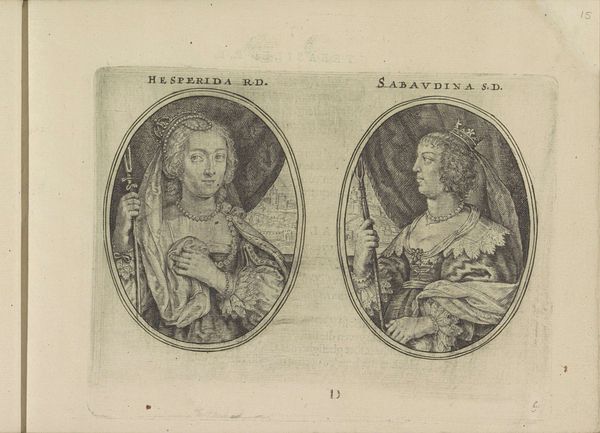
Portretten van twee onbekende vrouwen, beiden als herderin 1640
0:00
0:00
print, engraving
#
portrait
#
baroque
# print
#
genre-painting
#
engraving
Dimensions: height 115 mm, width 150 mm
Copyright: Rijks Museum: Open Domain
Editor: This is “Portretten van twee onbekende vrouwen, beiden als herderin,” or “Portraits of two unknown women, both as shepherdesses,” an engraving by Crispijn van de Passe the Younger, dating back to 1640. What strikes me is the contrast. One woman appears almost severe, while the other seems more playful. How do you interpret the symbolism at play here? Curator: These aren’t simple portraits, are they? Consider the idealized shepherdess, a figure deeply rooted in pastoral romances. She symbolizes an escape from the complexities of courtly life. Now, observe the attributes. The shepherd’s crook, for instance, is more than just a tool. It signifies authority and care. Are they truly unknown, or do these details offer hidden clues about their identities or social standing? Editor: So, the attire and the shepherdess theme weren't literal then, but rather a way to project an image? Is the contrast just a way to depict the broad personalities within noble women? Curator: Precisely. The symbols and the chosen "genre" create layers. It hints at cultural ideals and perhaps personal aspirations. Does the background contribute to the narrative? What is its relation to their inner world? How does the engraving capture a fleeting moment while also suggesting timeless ideals about women's roles? Editor: I see now how their visual representation serves as more than just likenesses. Thanks. Curator: Indeed, the symbolism provides a pathway to unravel the cultural context of this piece. These portraits prompt questions of cultural memory and identity in the Baroque Era.
Comments
No comments
Be the first to comment and join the conversation on the ultimate creative platform.
